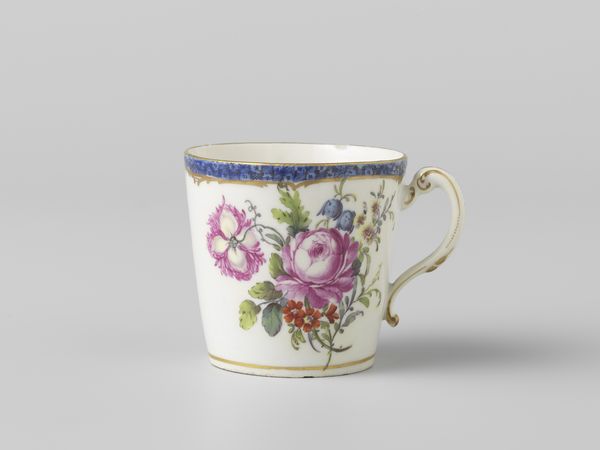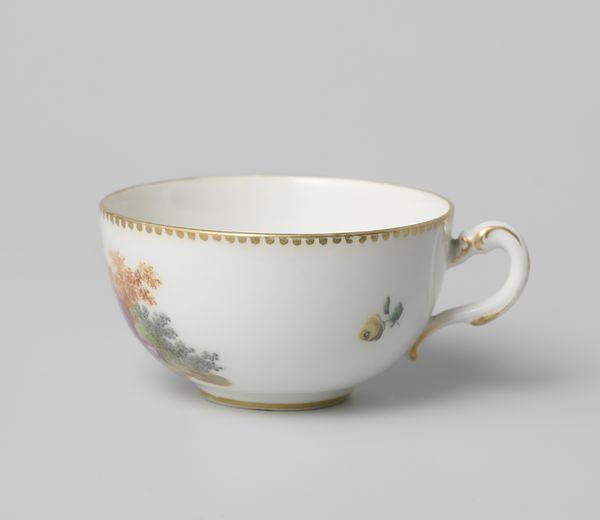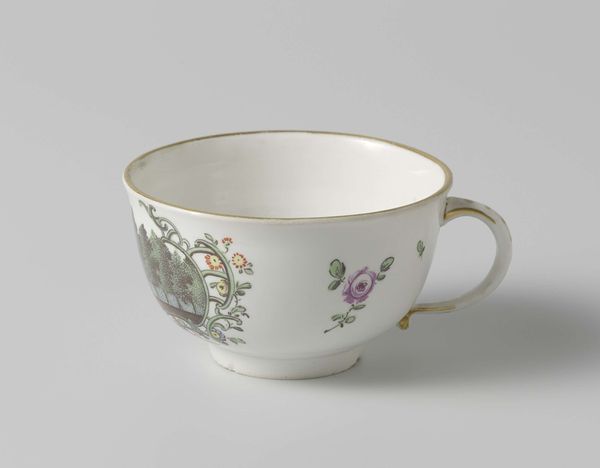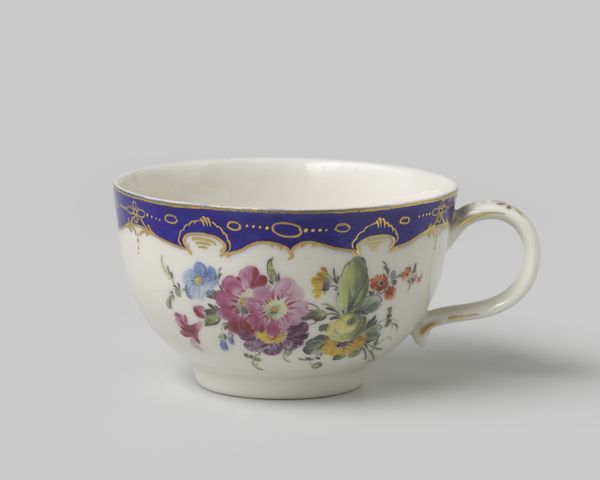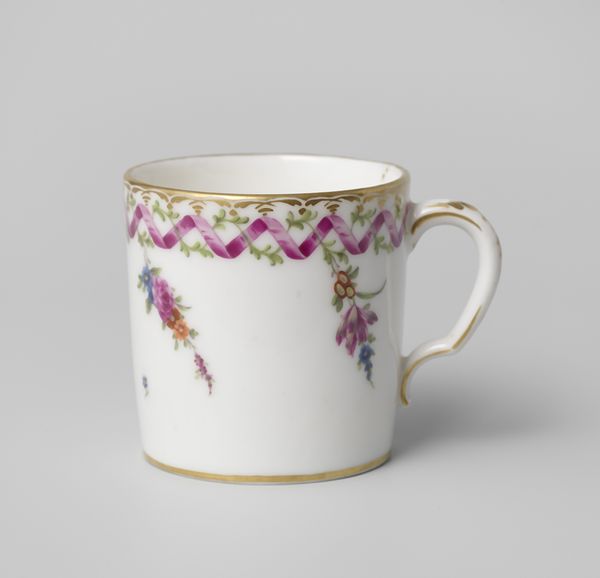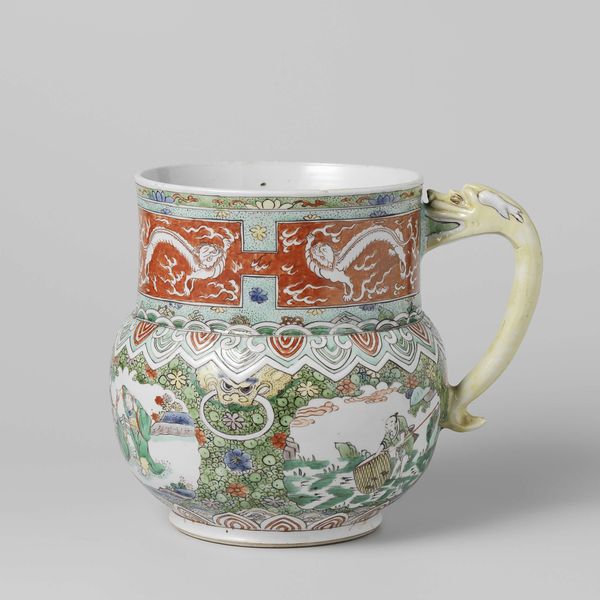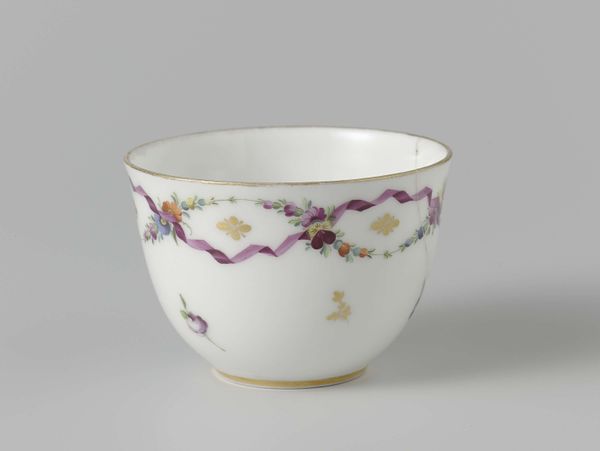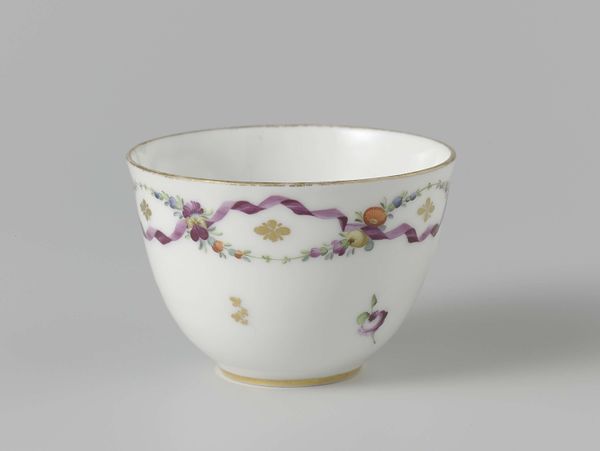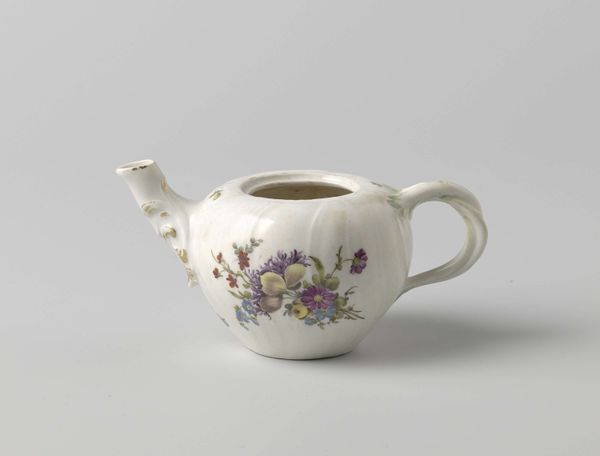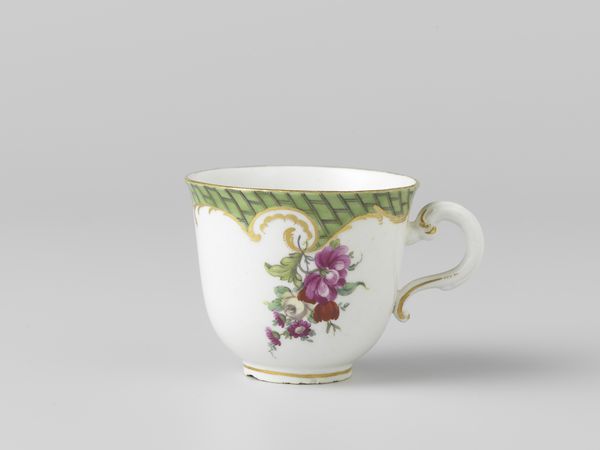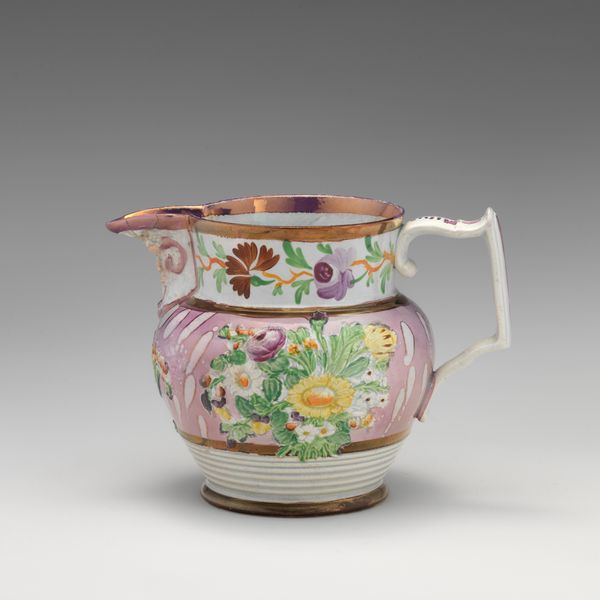
Dimensions: height 4.7 cm, diameter 8.0 cm, diameter 13.3 cm
Copyright: Rijks Museum: Open Domain
Editor: So here we have a lovely little ceramic piece, "Kop met oor, beschilderd met bloemen en laddermotief," from around 1775-1778, made by Loosdrecht. The floral designs are charming, but what strikes me most is how much it embraces luxury in everyday life. What stands out to you? Curator: What fascinates me is not just its aesthetic appeal, but the broader context of its production. How was this ceramic crafted? Who were the artisans involved? The creation of a porcelain cup involved considerable labor – the mining of clay, the crafting of the form, the firing, and then, of course, the meticulous hand-painting. Editor: That's a good point. I guess it’s easy to overlook the actual process. Was there anything unique about this production at the time? Curator: Indeed. The materials, the precise kaolin clay that made European porcelain possible, was a material that altered trade routes and industrial ambition. Consider how Loosdrecht and other manufactures like it challenged older ideas about artistry, turning it towards commodity and consumption for the rising middle class. The flowers aren't merely pretty, they’re a reflection of emerging consumer culture. The question of value comes up. Are painted ceramics like this more or less valuable than, say, a canvas painting, in the eighteenth century and today? What does this cup represent in terms of skill? Editor: That's an interesting perspective; looking at it from the point of view of the labor and materials really does change my appreciation for it. It shifts my view away from the Rococo prettiness. Curator: Precisely. The very act of possessing such an item speaks volumes about the societal structure and economic transformations happening then, not unlike our brand loyalties today. Editor: I never considered the cup in light of material consumption like that before. Thanks for bringing that aspect to my attention. Curator: Of course. The surface aesthetic gives way to the conditions that makes such works possible. It helps to ask of any artwork: What was it for? How was it made? And whose interests did it serve?
Comments
No comments
Be the first to comment and join the conversation on the ultimate creative platform.

